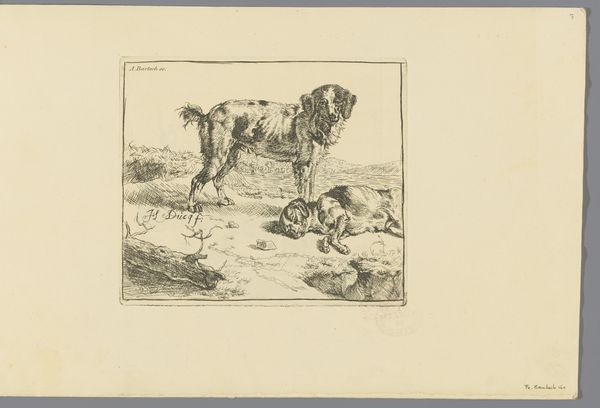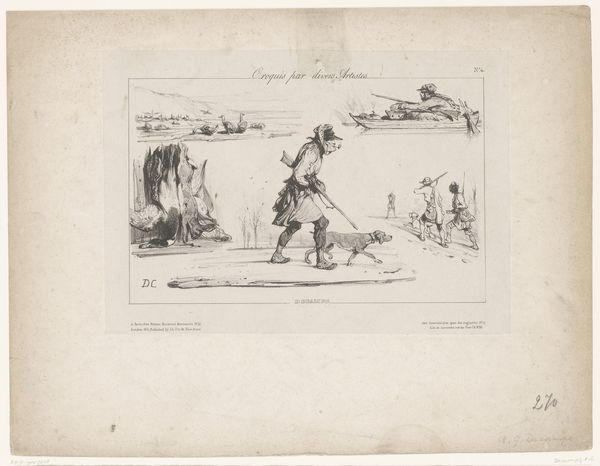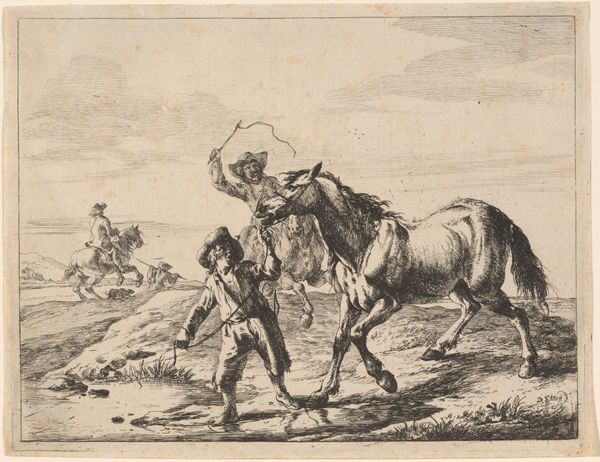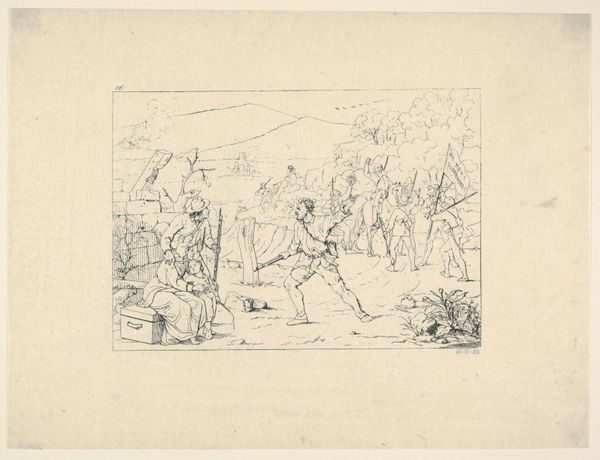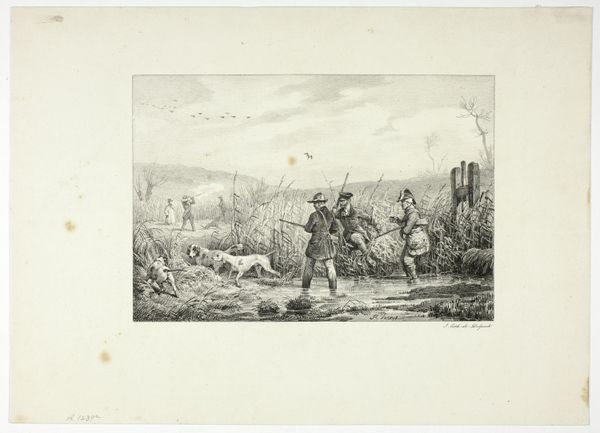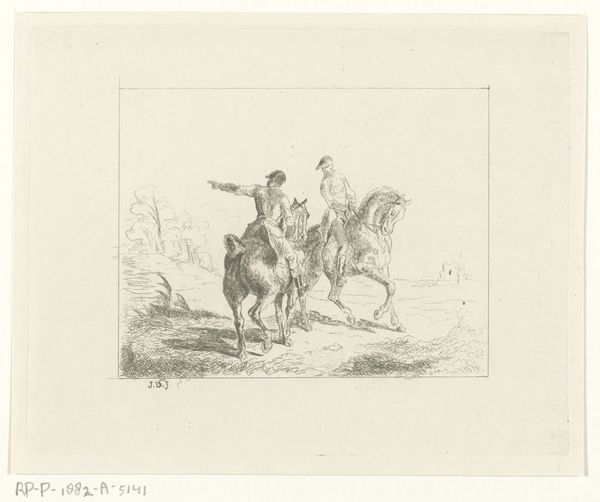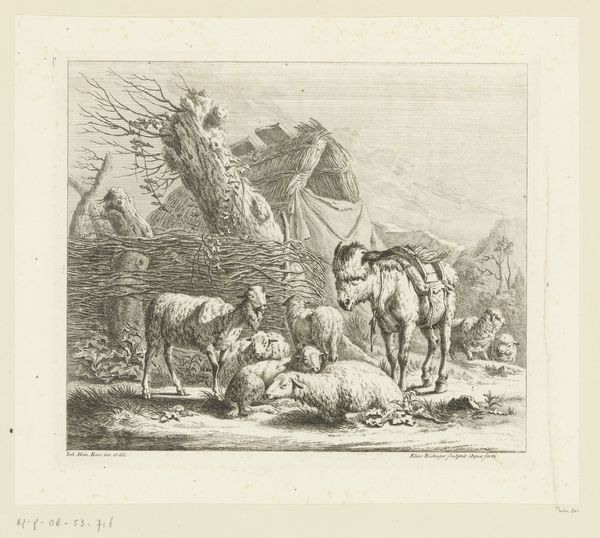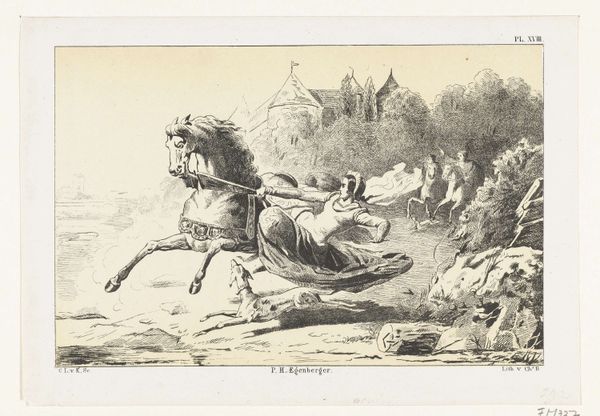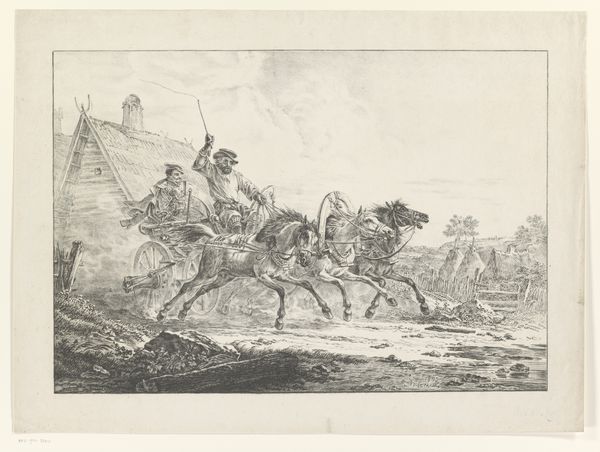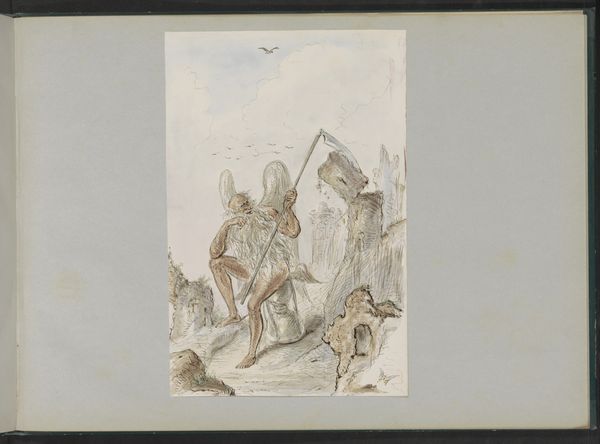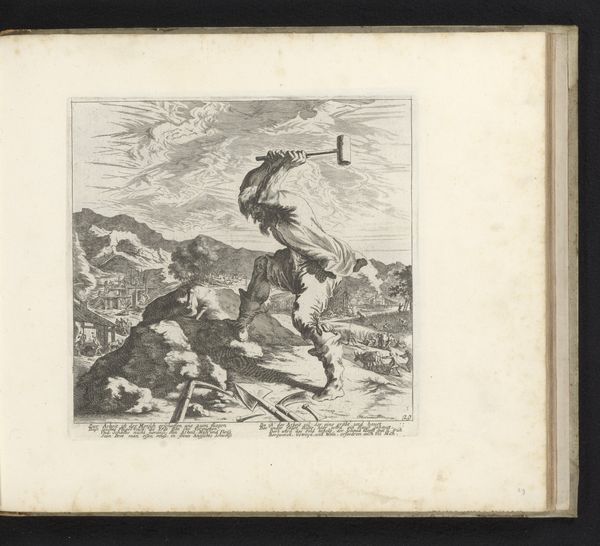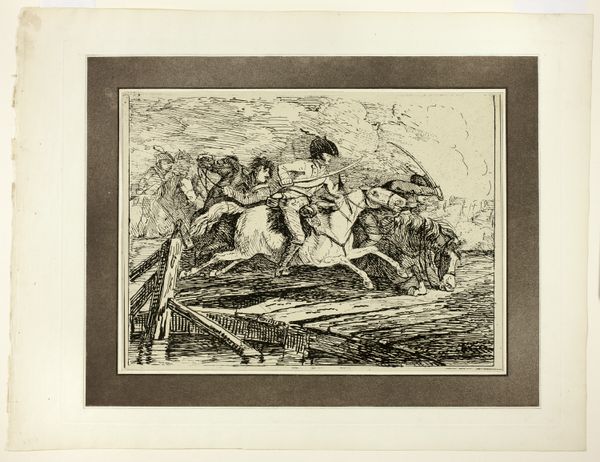
drawing, print, engraving
#
drawing
#
narrative-art
# print
#
landscape
#
figuration
#
romanticism
#
line
#
engraving
Dimensions: height 183 mm, width 233 mm
Copyright: Rijks Museum: Open Domain
Editor: Here we have Adam von Bartsch’s "Herder achtervolgt een wolf," created in 1803. It’s an engraving, and what strikes me first is the stark contrast between the frenzied energy of the figures in the foreground and the serene, almost idyllic, landscape behind them. How do you read the formal elements of this work? Curator: The dominance of line is undeniable, creating not just form, but also texture and movement. Observe how Bartsch employs varied line weights to define depth and delineate forms. Note the density of hatching in the foreground versus the more open, less defined rendering of the background landscape. This differential treatment serves to amplify the dramatic tension, effectively drawing the viewer's eye to the central conflict. Editor: So, the technique itself underscores the narrative, beyond just illustrating a shepherd chasing a wolf? Curator: Precisely. Consider the use of diagonals; the shepherd's spear, the wolf's body, the incline of the hill – all create a dynamic composition that avoids stasis. The arrangement lends the entire scene dynamism; were these lines oriented vertically, the narrative momentum would fall flat. What do you notice about the treatment of light and shadow? Editor: It's subtle but the focused shadowing around the wolf’s legs, for example, throws the animal into stark relief; light makes the figures pop off the pale substrate. Curator: Exactly. It's not photorealistic, of course, but the engraving relies on these gradations to describe shape and action, further concentrating narrative interest. What has been interesting is exploring the interplay between formal strategy and expressive potential, in relation to this striking use of contrasting dark-light elements. Editor: It’s fascinating how closely considering the visual structure opens up the artist’s intent; I’ll certainly look at the pieces that way in the future.
Comments
No comments
Be the first to comment and join the conversation on the ultimate creative platform.

